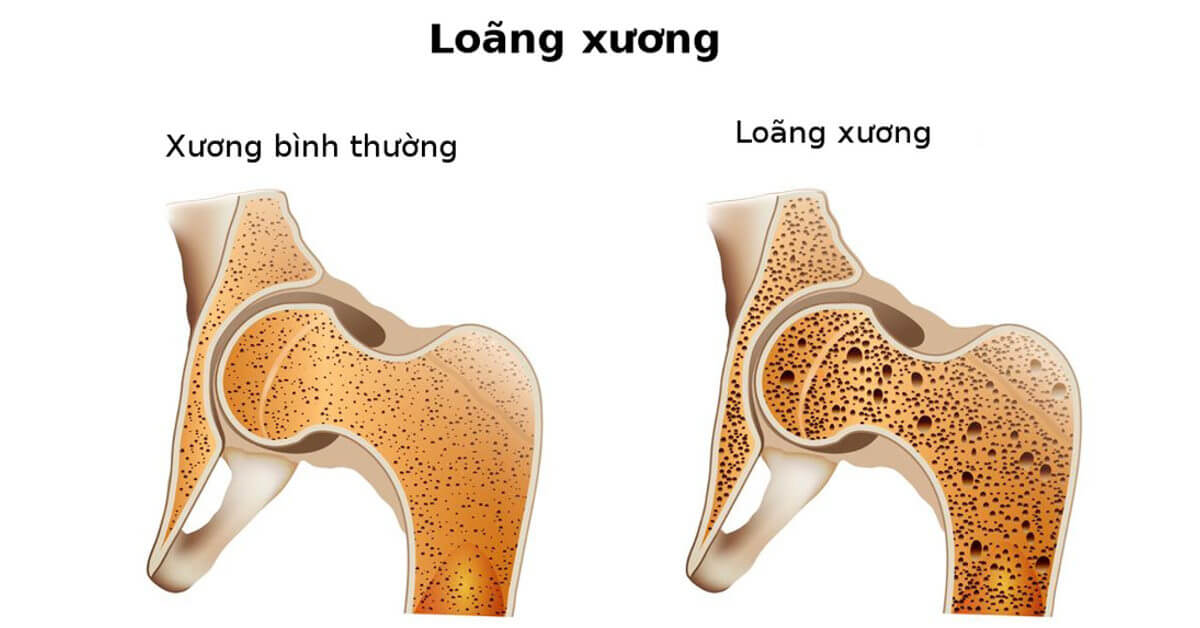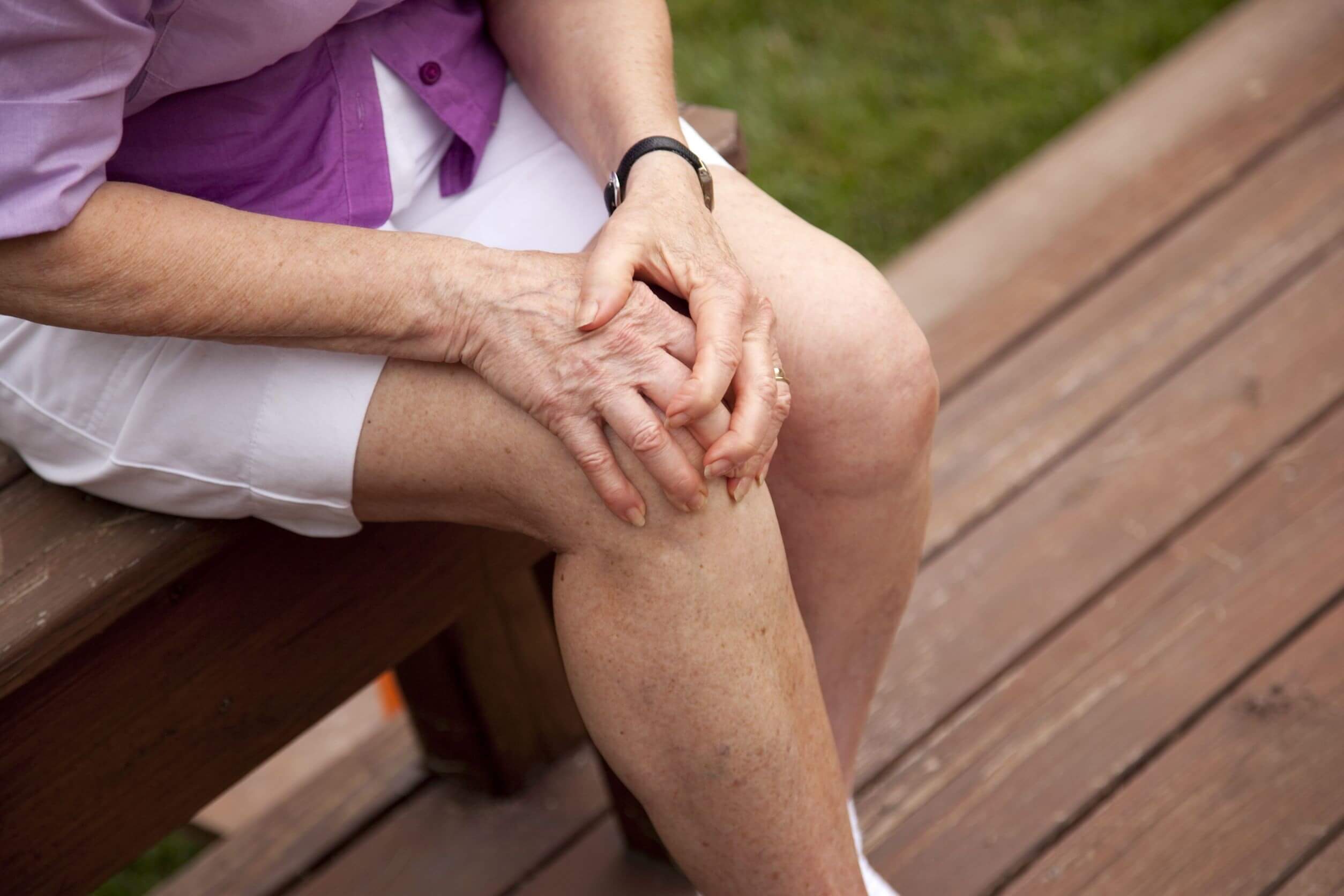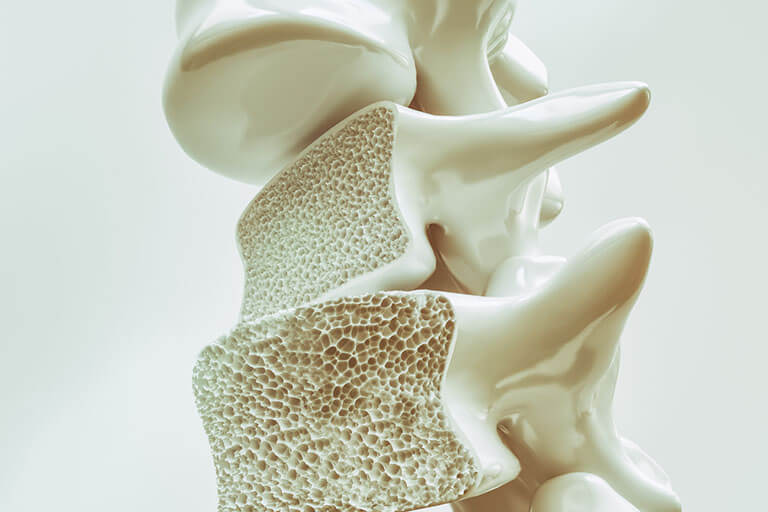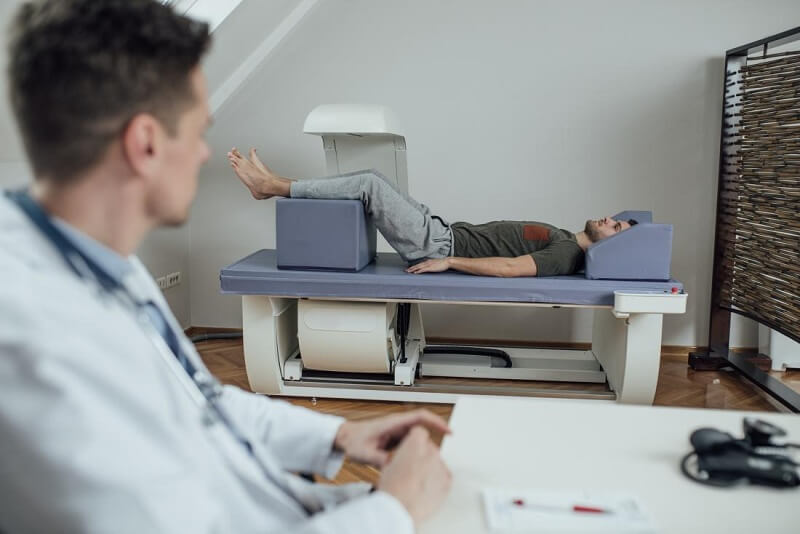Currently, the prevalence of osteoporosis within the community is alarmingly high, especially among the elderly population. Osteoporosis can directly impact the health of individuals, rendering their bones vulnerable to damage, fractures, and slow recovery.
NỘI DUNG CHÍNH
1. What is Osteoporosis?
Osteoporosis is a condition where bones continually become thin and weak. Over time, bone density diminishes, making bones brittle and susceptible to damage or fracture from even minor external forces.

2. Causes of Osteoporosis
Osteoporosis is prevalent in Vietnam, affecting 4 out of every ten individuals. Various factors contribute to osteoporosis, including:
Aging: Aging weakens the body’s ability to metabolize calcium and produce necessary nutrients for bones, leading to a severe decrease in bone density and osteoporosis.

Hormone Deficiency: Estrogen, a hormone that protects bones, is vital. Low estrogen levels, as seen in post-menopausal women, those with irregular menstrual cycles, and men with low sex hormone levels, increase the risk of osteoporosis.
Nutrition: Inadequate intake of essential nutrients like calcium, vitamin D, vitamin B6, vitamin K, magnesium, and phosphorus can lead to osteoporosis.

Excessive Alcohol and Stimulant Use: Overconsumption of alcohol, beer, coffee, or other stimulants can hinder the body’s calcium absorption.
3. Symptoms of Osteoporosis
Osteoporosis symptoms are often subtle, with many individuals unaware of the condition until their bones become fragile and fracture easily. Common symptoms include:
– Reduced Bone Density: Patients may experience acute back pain, height loss, hunched posture, or changes in body shape. Spinal bones may compress and collapse.
– Bone Aches: This is the most noticeable symptom of osteoporosis. Patients may feel persistent aches along long bones or an overall body ache similar to a dull, aching sensation.
– Pain in Load-Bearing Areas: The spine, lower back, pelvis, hips, and knees. This condition can affect the ribs, thighs, and sciatic nerves. Pain worsens during vigorous activity or sudden position changes, preventing patients from bending or rotating.
– Additional Signs: Osteoporosis in older adults can be accompanied by varicose veins, high blood pressure, and joint degeneration.

4. Common Complications of Osteoporosis
Untreated osteoporosis can lead to severe complications, including:
– Fractures and Cracks: Even minor impacts can result in fractures, especially in patients with severe osteoporosis.
– Bone Deformities: Spinal fractures can lead to curvature, bending of long bones, hunched posture, and height loss.
– Other Complications: Elderly individuals with osteoporosis may also experience varicose veins, high blood pressure, and joint degeneration.
5. Effective Osteoporosis Prevention to minimize the risk of complications
it’s crucial to adopt preventive measures by modifying dietary and lifestyle habits:
Exercise: Engage in suitable physical activities to enhance bone density and reduce the risk of osteoporosis. Walking, jogging, dancing, yoga, and tennis improve joint and bone quality. Tailor exercises to your fitness level, especially for those with limited mobility or age-related health issues.

Nutrient-Rich Diet: As you age, your body’s calcium stores become vulnerable to depletion. Ensure you maintain a calcium-rich diet from low-fat dairy products, fruit juices, fortified cereals, soy milk, tofu, sardines, salmon, leafy greens, and more. Adequate vitamin D intake is essential for calcium absorption.
Avoid Stimulants: Limit alcohol, beer, cigarettes, coffee, soda, and other stimulants as they disrupt estrogen production and calcium absorption.
Regular Bone Density Checks: Periodically monitor bone density to evaluate your current bone health and detect osteoporosis early. This information will guide you in choosing appropriate exercise routines, dietary adjustments, and treatment options.

We hope this information is valuable to our readers. If you have any questions or concerns related to bone and joint health, please do not hesitate to contact Intermec for expert guidance.





Cập nhật lần cuối: 17/06/2024
Bài viết liên quan
Causes, Symptoms, and Effective Treatment of Shoulder Osteoarthritis
Shoulder osteoarthritis is a typical joint and bone condition nowadays. It causes pain, stiffness, and reduced mobility in the shoulder and arm area. Early detection and timely treatment can slow down the progression of the disease. Let INTERMEC guide you...
Oct
Inflammation Around the Shoulder Joint – A Dangerous Yet Lesser-Known Condition
Inflammation around the shoulder joint with stiffness, also known as adhesive capsulitis or frozen shoulder, is a condition where the shoulder joint becomes stiff due to the formation of scar tissue around it. It thickens and tightens the joint capsule,...
Oct
Achilles Tendonitis – A Common Condition Among Athletes
Achilles tendonitis is a prevalent condition often encountered by athletes or professional sports enthusiasts. Patients typically experience prolonged and challenging discomfort that hampers their daily activities. If not promptly treated, it can lead to various dangerous complications. NỘI DUNG CHÍNH1....
Oct